Rapid Optimization of Double-Stators Switched Reluctance Motor with Equivalent Magnetic Circuit
Abstract
:1. Introduction
2. Equivalent Magnetic Circuit Analysis of DSSRM
2.1. Calculated Magnetic Flux Linkage of Aligned Position
2.2. Calculated Magnetic Flux Linkage of Unaligned Position
2.3. Calculated Flux Linkage of Outer Stator Excited
2.4. Calculated Flux Linkage of Inner Excited Stator
2.5. Optimal Operation Point of MMF
3. Optimal Design of DSSRM
3.1. Geometric Parameters of DSSRM Optimization
- (1)
- .
- (2)
- .
- (3)
- .
- (4)
- .
- (5)
- (and ) > .
- (6)
- > .
- (7)
- Winding turns of stator slot fit the optimal MMF.
3.2. Structural Decomposition Diagram and Prototype of DSSRM
4. Simulation Results
5. Conclusions
Conflicts of Interest
References
- Asgar, M.; Afjei, E.; Torkaman, H. A New Strategy for Design and Analysis of a Double-Stator Switched Reluctance Motor: Electromagnetics, FEM, and Experiment. IEEE Trans. Magn. 2015, 51, 8208808. [Google Scholar] [CrossRef]
- Radun, A. Analytical Calculation of the Switched Reluctance Motor’s Unaligned Inductance. IEEE Trans. Magn. 1999, 35, 4473–4481. [Google Scholar] [CrossRef]
- Isfahani, A.H.; Fahimi, B. Comparison of Mechanical Vibration between a Double-Stator Switched Reluctance Machine and a Conventional Switched Reluctance Machine. IEEE Trans. Magn. 2014, 50, 7007104. [Google Scholar] [CrossRef]
- Arbab, N.; Wang, W.; Lin, C.; Hearron, J.; Fahimi, B. Thermal Modeling and Analysis of a Double-Stator Switched Reluctance Motor. IEEE Trans. Energy Convers. 2015, 30, 1209–1217. [Google Scholar] [CrossRef]
- Abbasian, M.; Moallem, M.; Fahimi, B. Double-Stator Switched Reluctance Machines (DSSRM): Fundamentals and Magnetic Force Analysis. IEEE Trans. Energy Convers. 2010, 25, 589–597. [Google Scholar] [CrossRef]
- Abbasian, M.; Hanaeinejad, V. Torque Optimization of Double-Stator Switched Reluctance Machine. Appl. Mech. Mater. 2013, 313–314, 45–50. [Google Scholar] [CrossRef]
- Tavakkoli, M.; Moallem, M. Optimum Rotor Shaping for Torque Improvement of Double Stator Switched Reluctance Motor. J. Electr. Eng. Technol. 2014, 9, 1315–1323. [Google Scholar] [CrossRef]
- Huang, Y.; Zhou, T.; Dong, J.; Lin, H.; Yang, H.; Cheng, M. Magnetic Equivalent Circuit Modeling of Yokeless Axial Flux Permanent Magnet Machine with Segmented Armature. IEEE Trans. Magn. 2014, 50, 8104204. [Google Scholar] [CrossRef]
- Liptak, M. Principle of Design of Four-Phase Low-Power Switched Reluctance Machine Aimed to the Maximum Torque Production. J. Electr. Eng. 2004, 55, 138–143. [Google Scholar]
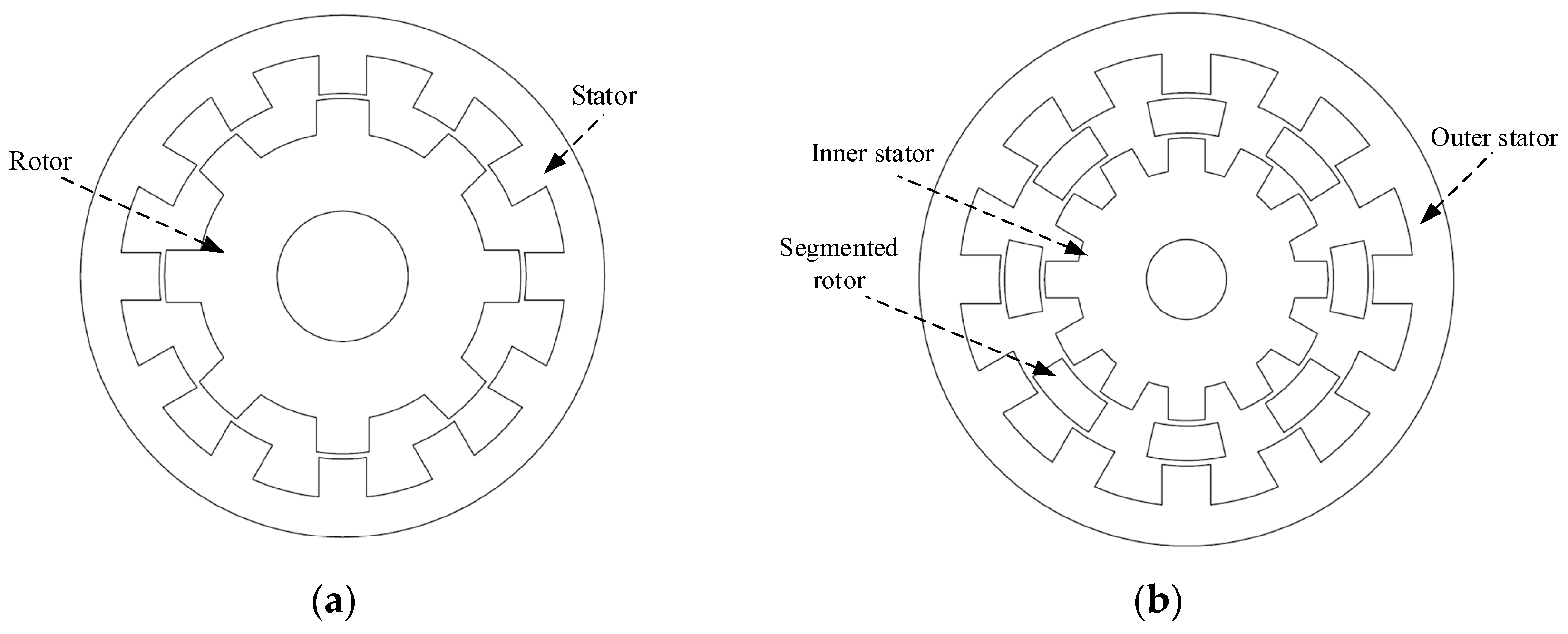
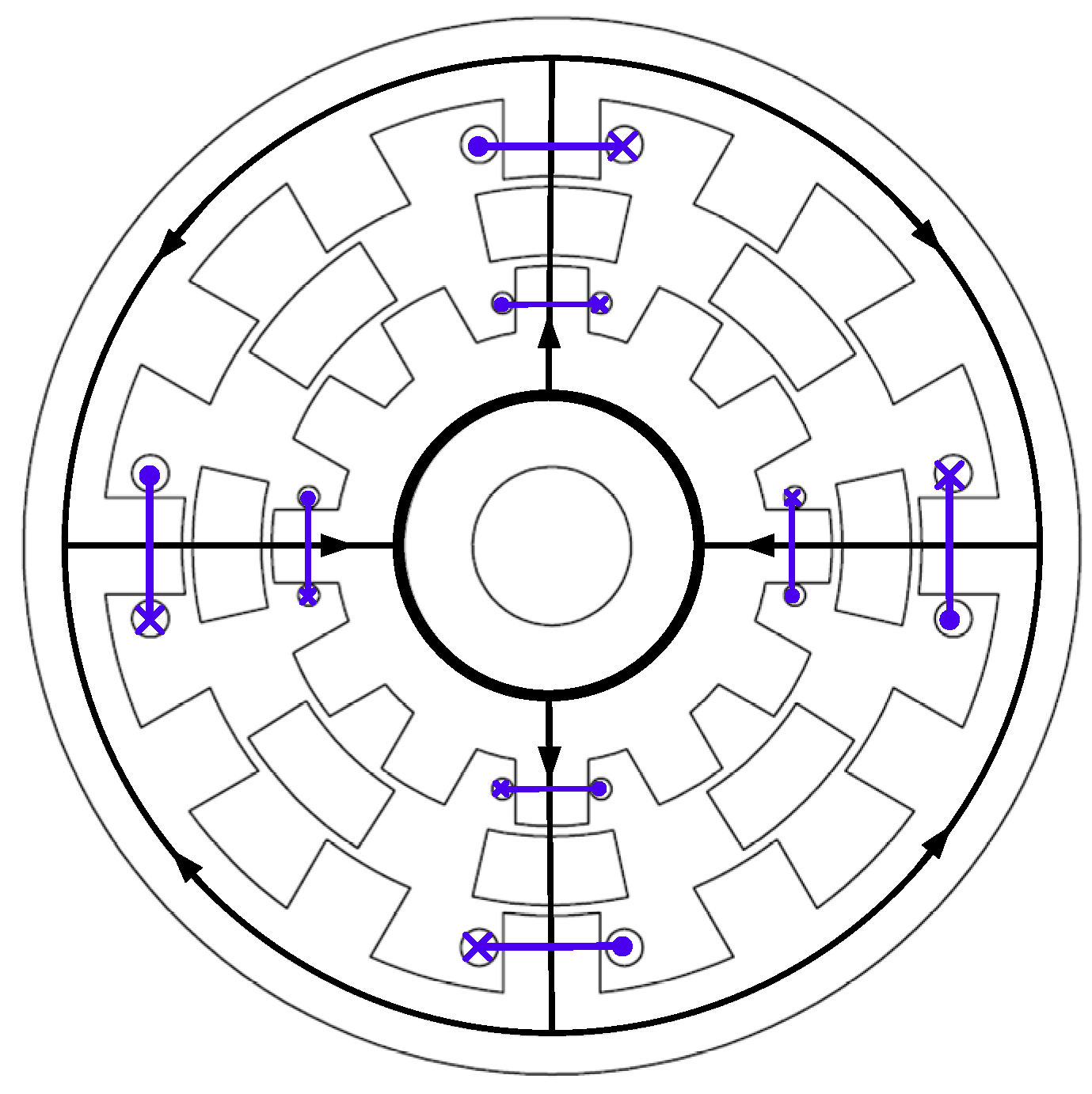
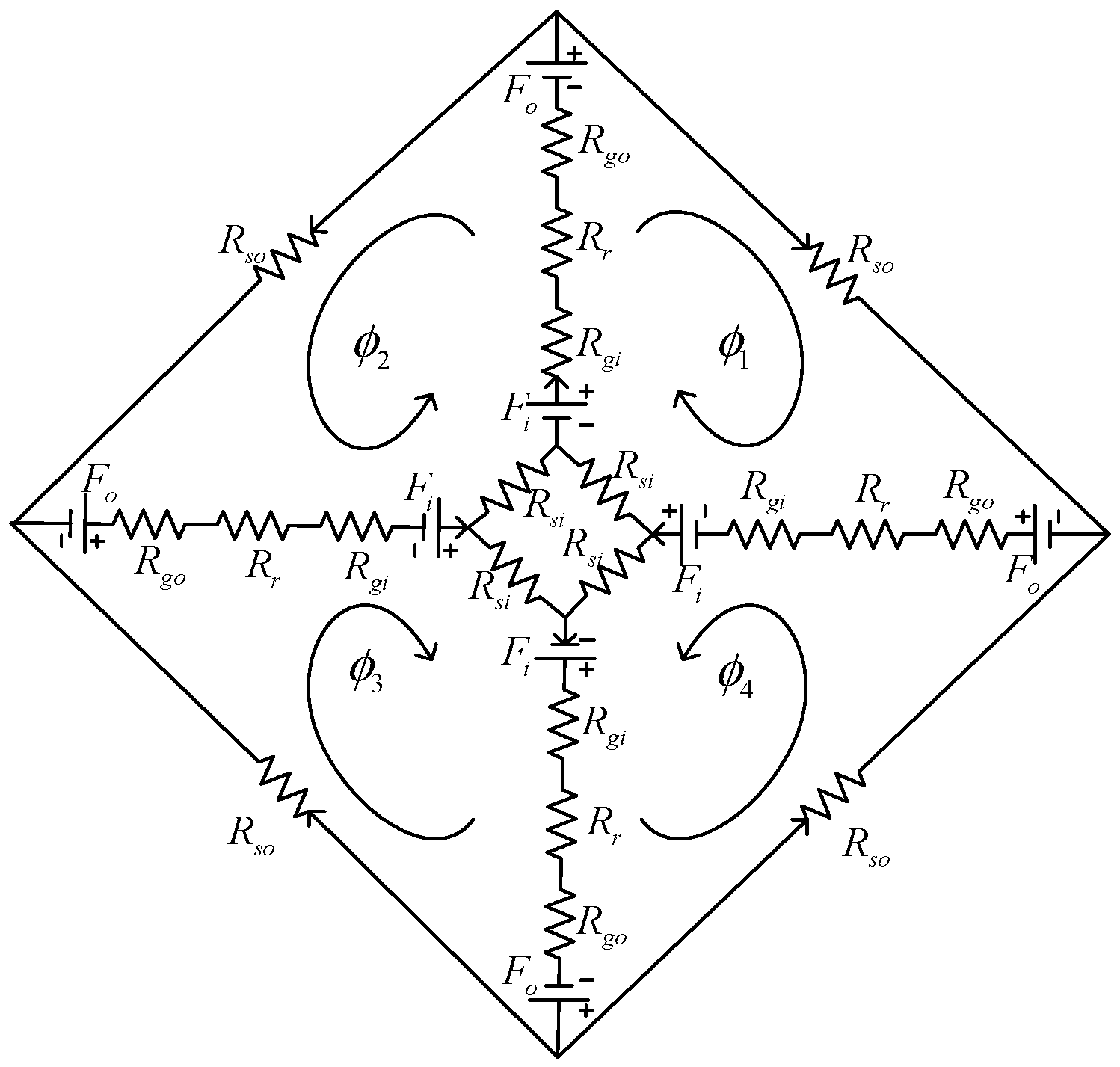

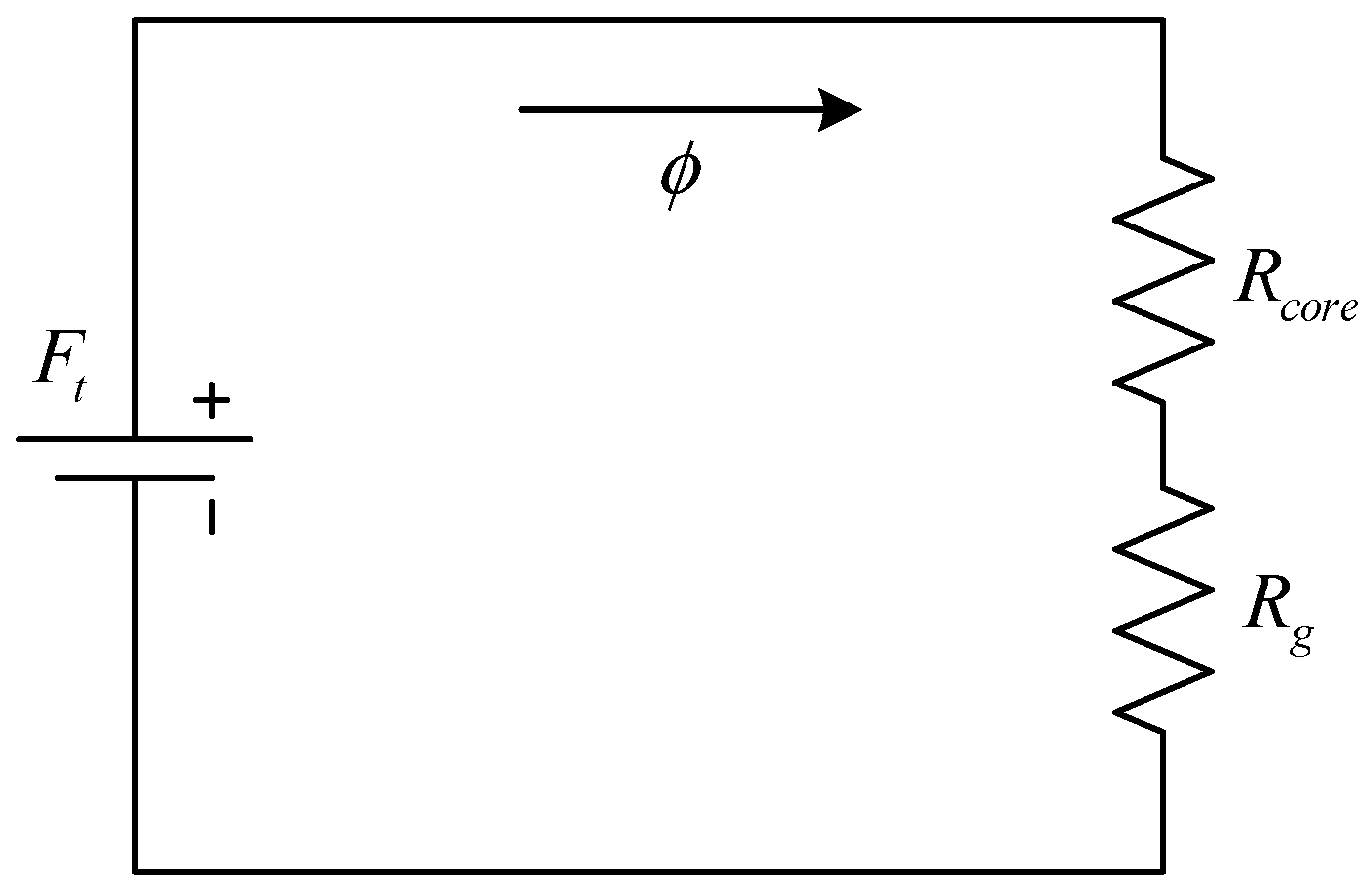
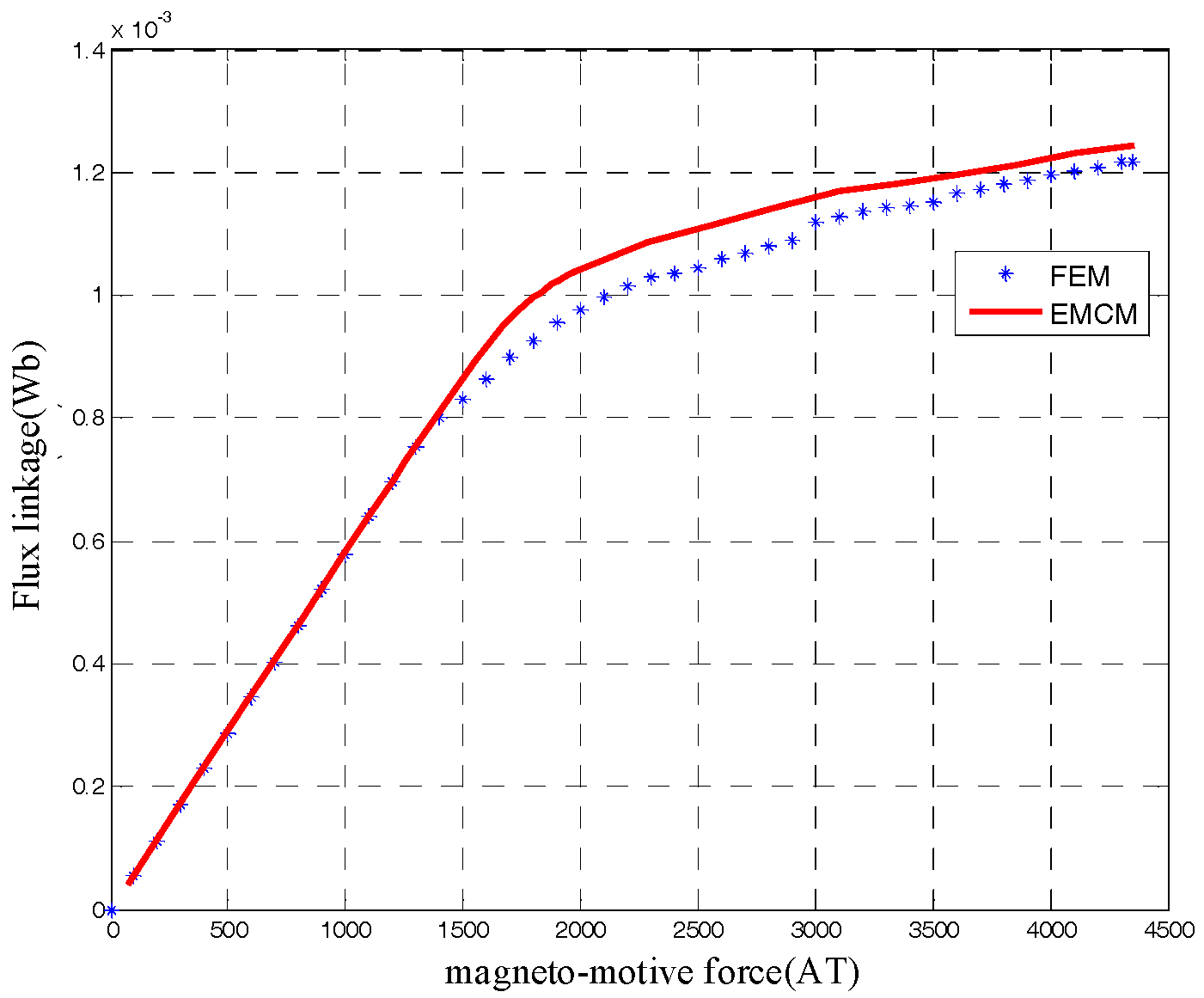
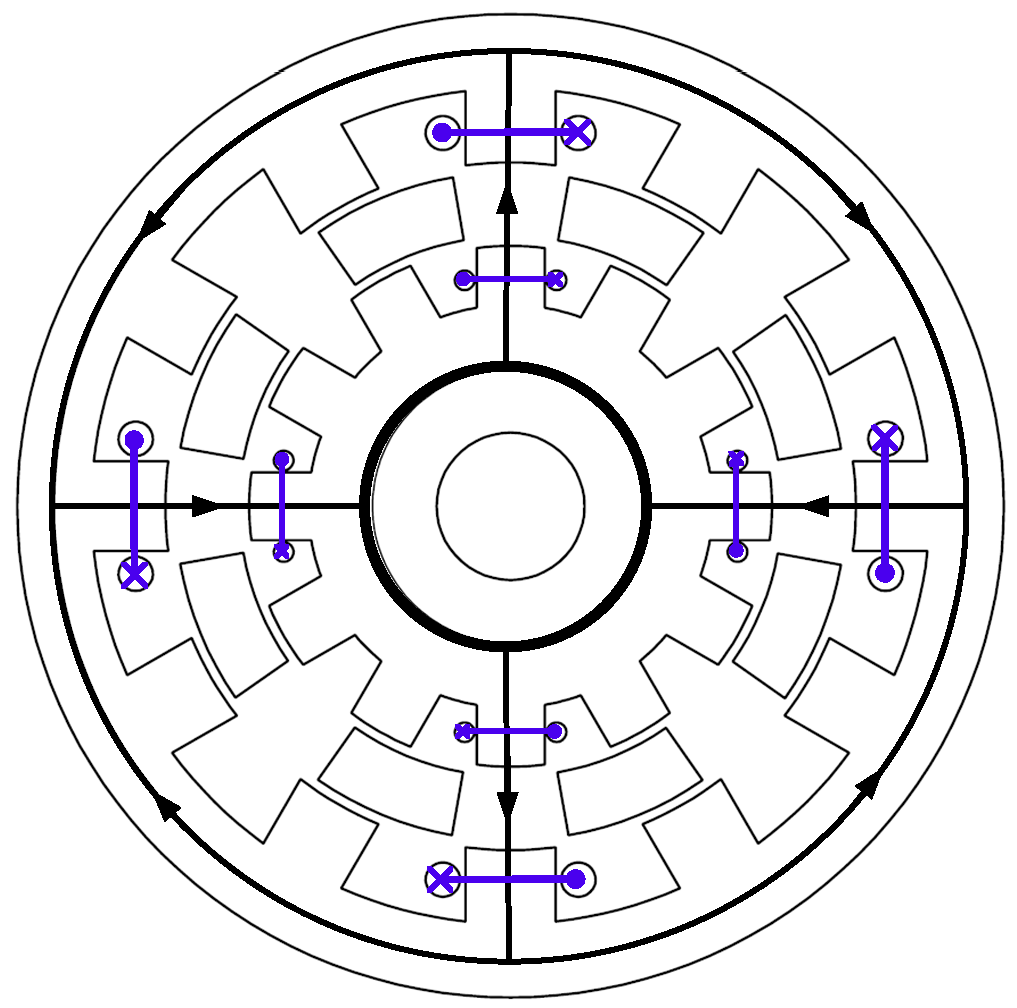
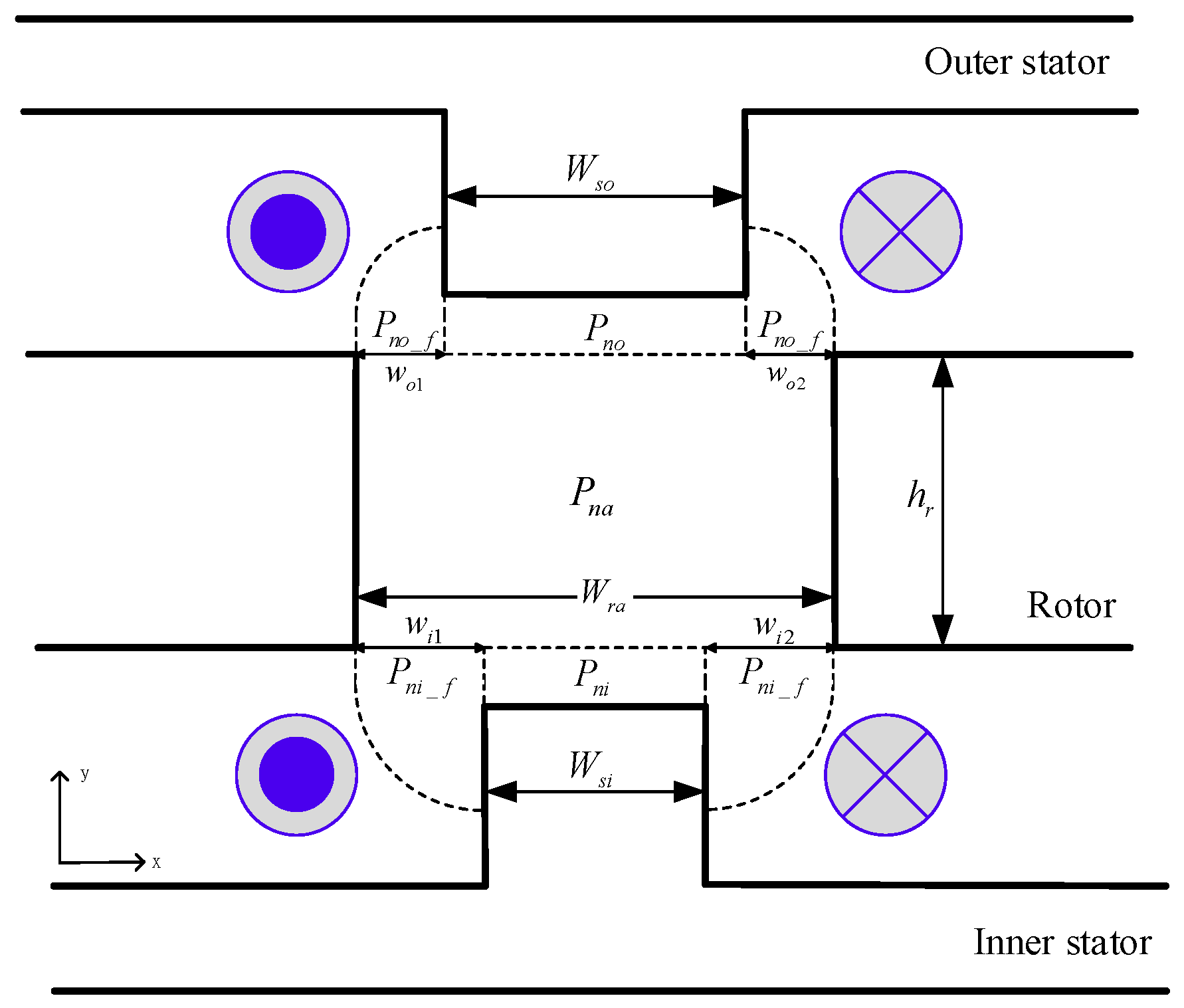
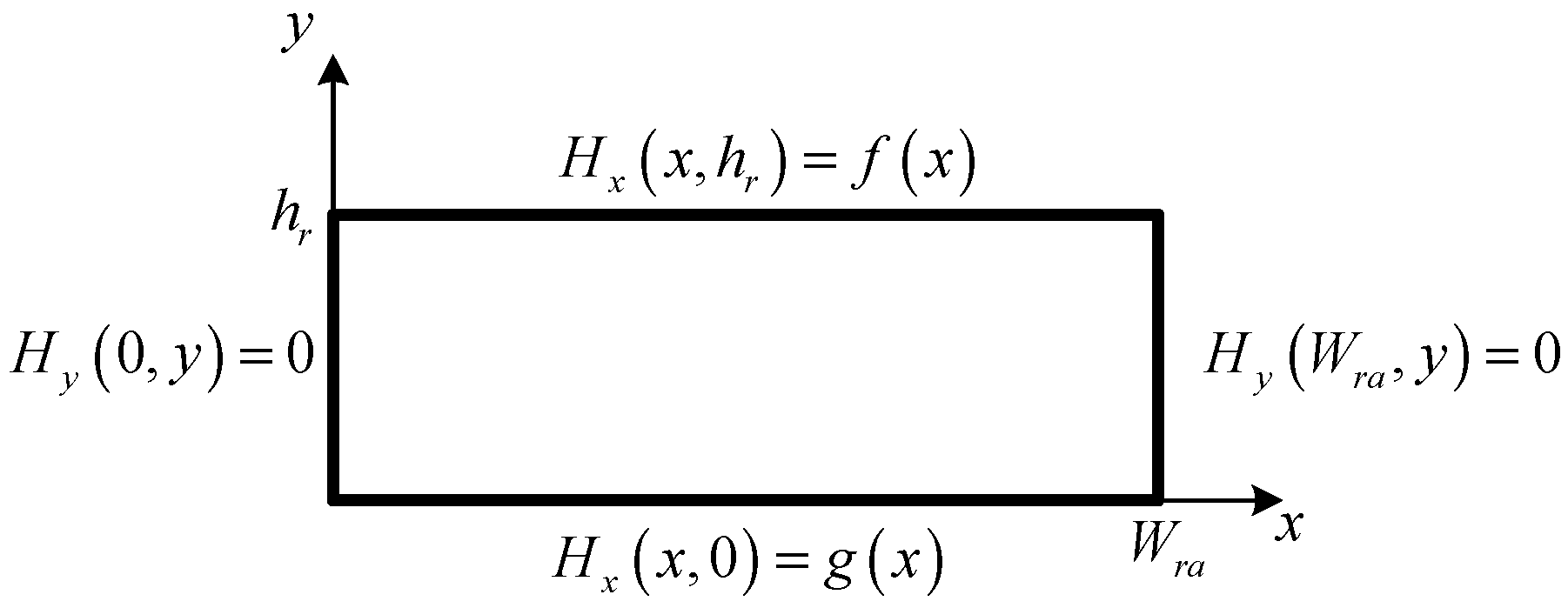
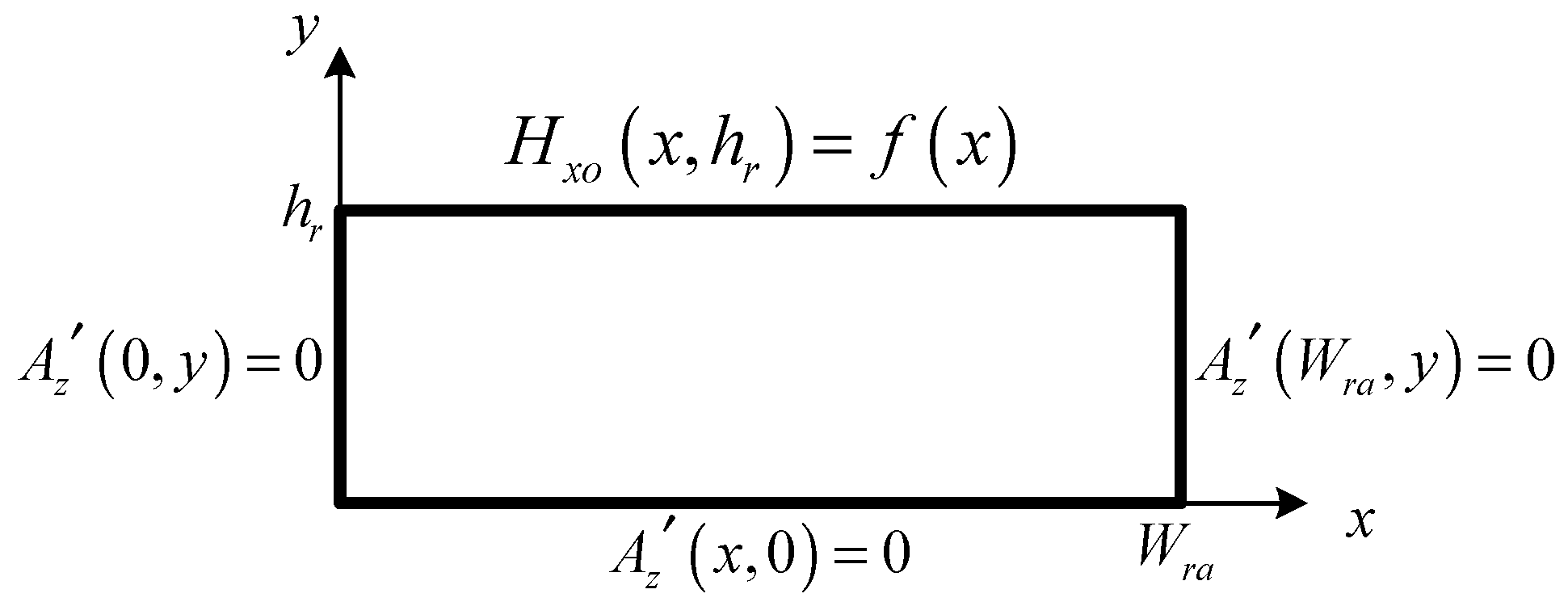
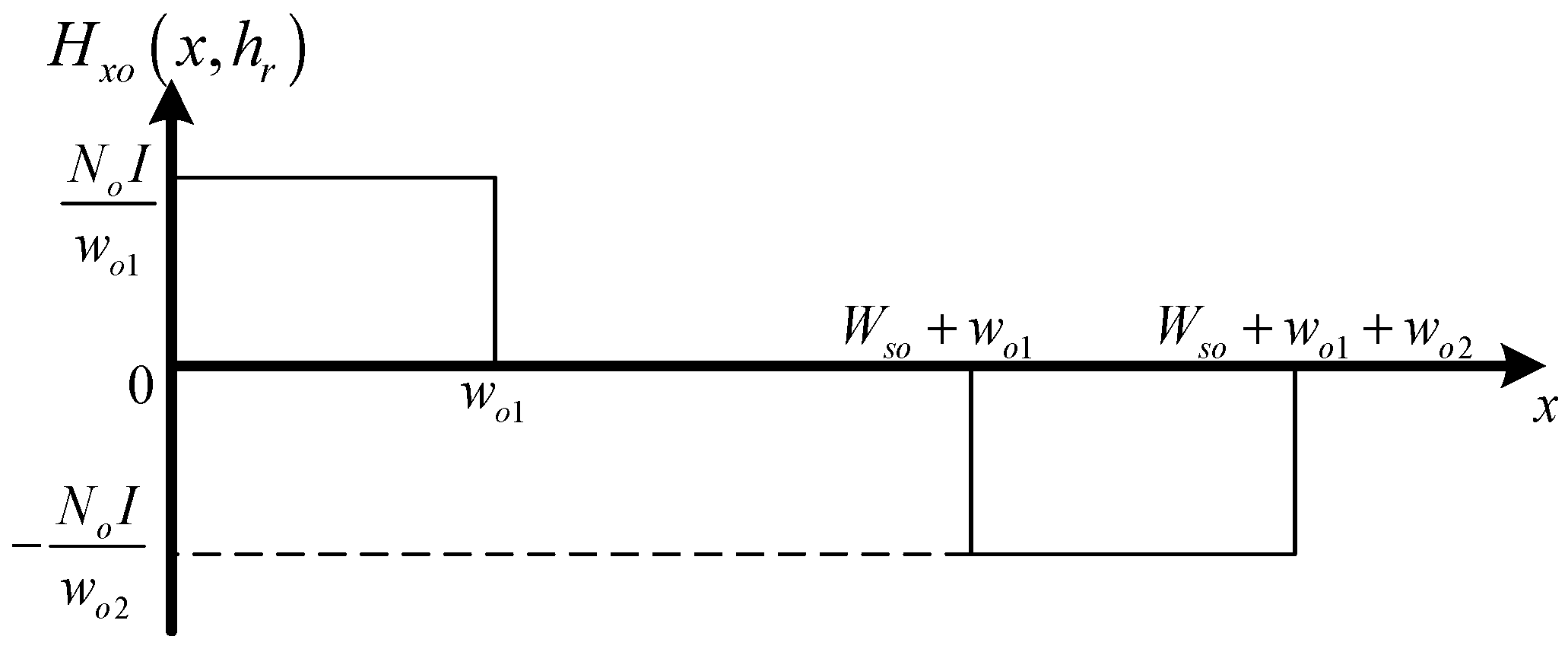

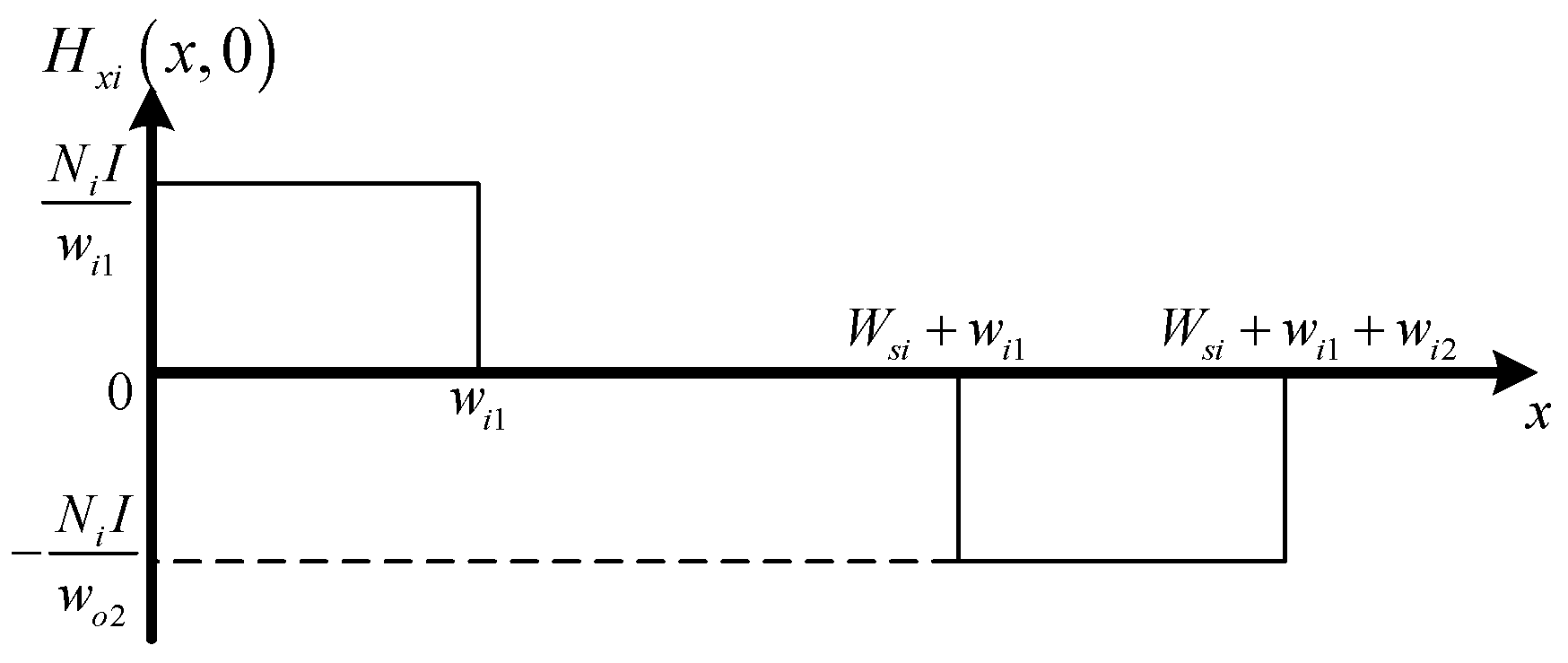
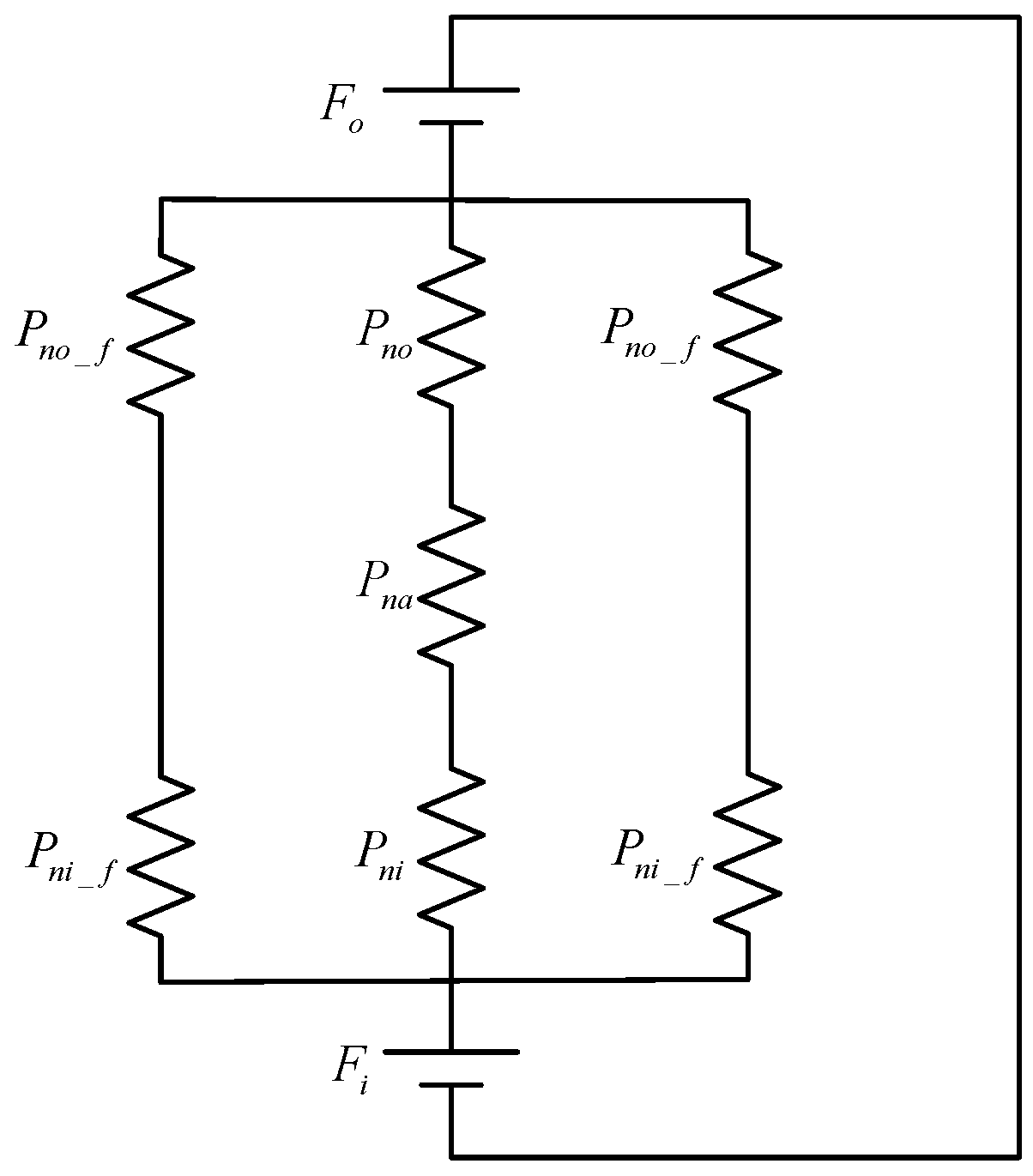
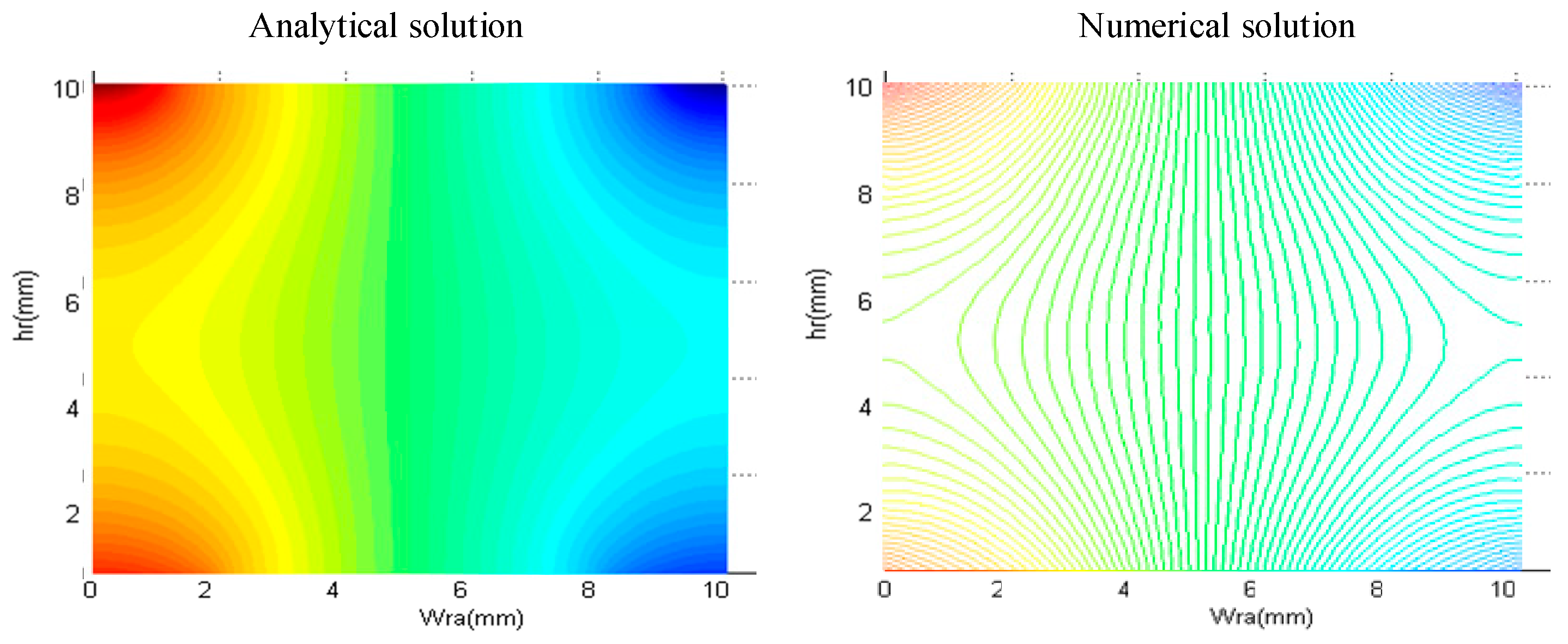
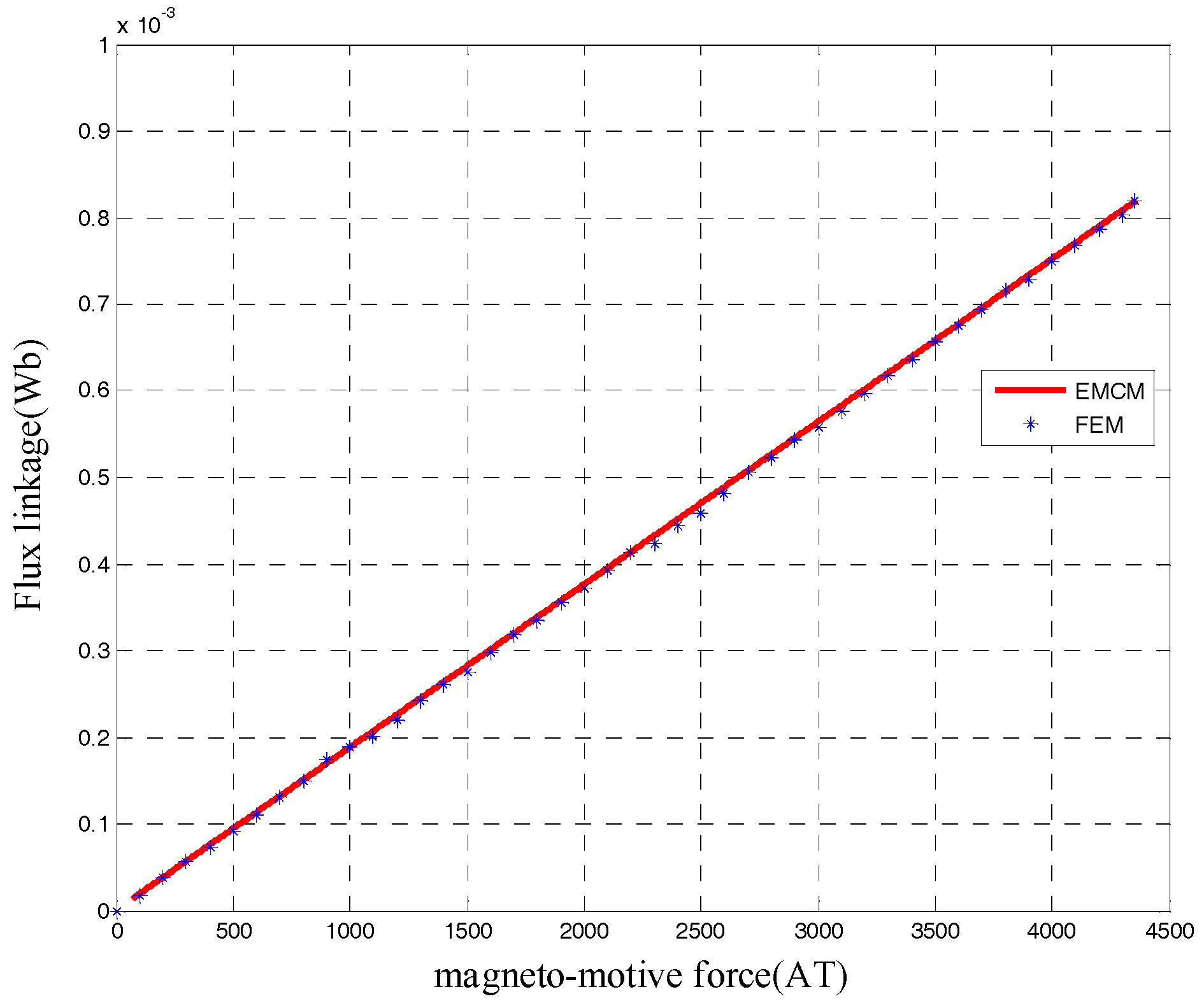
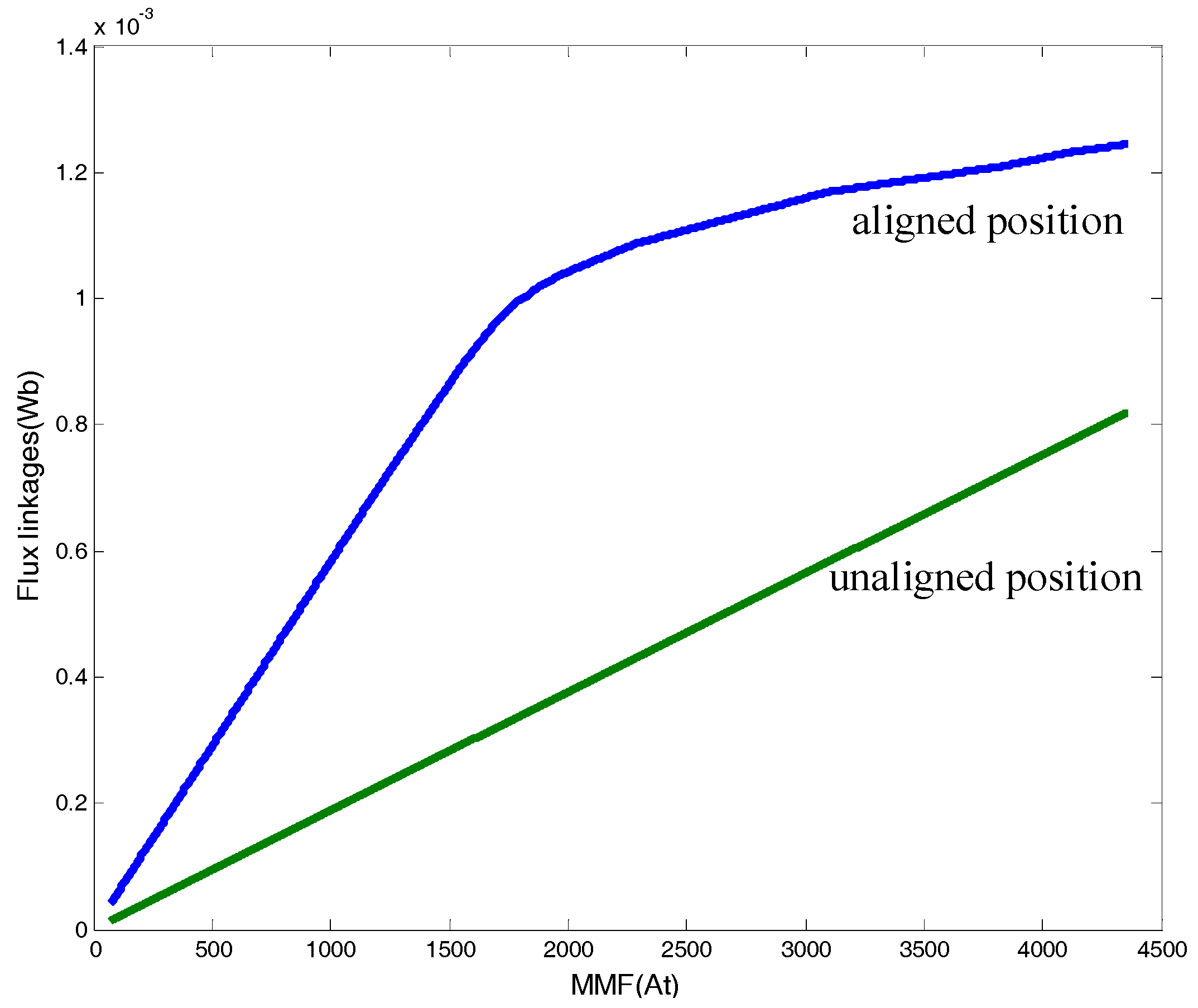
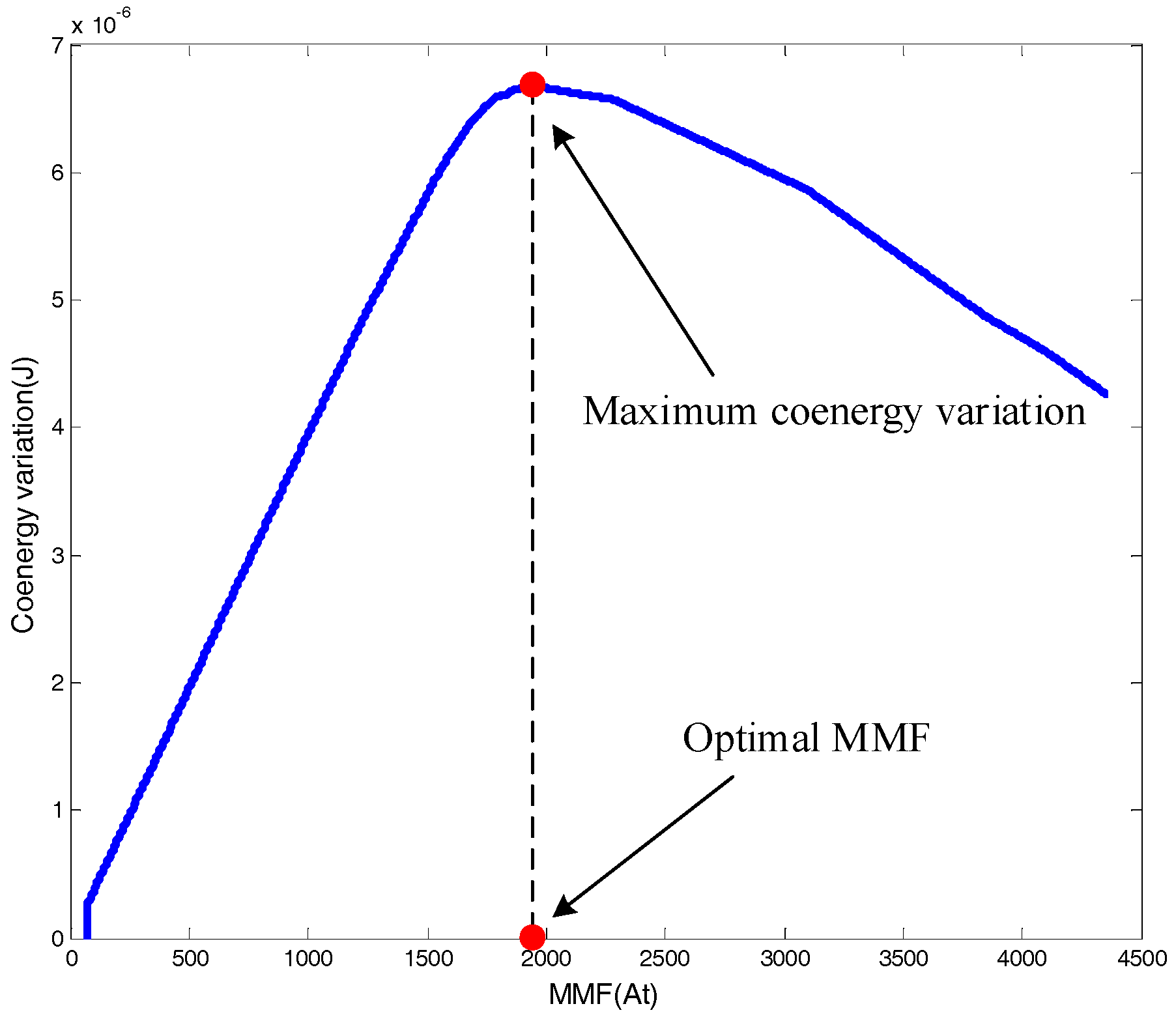
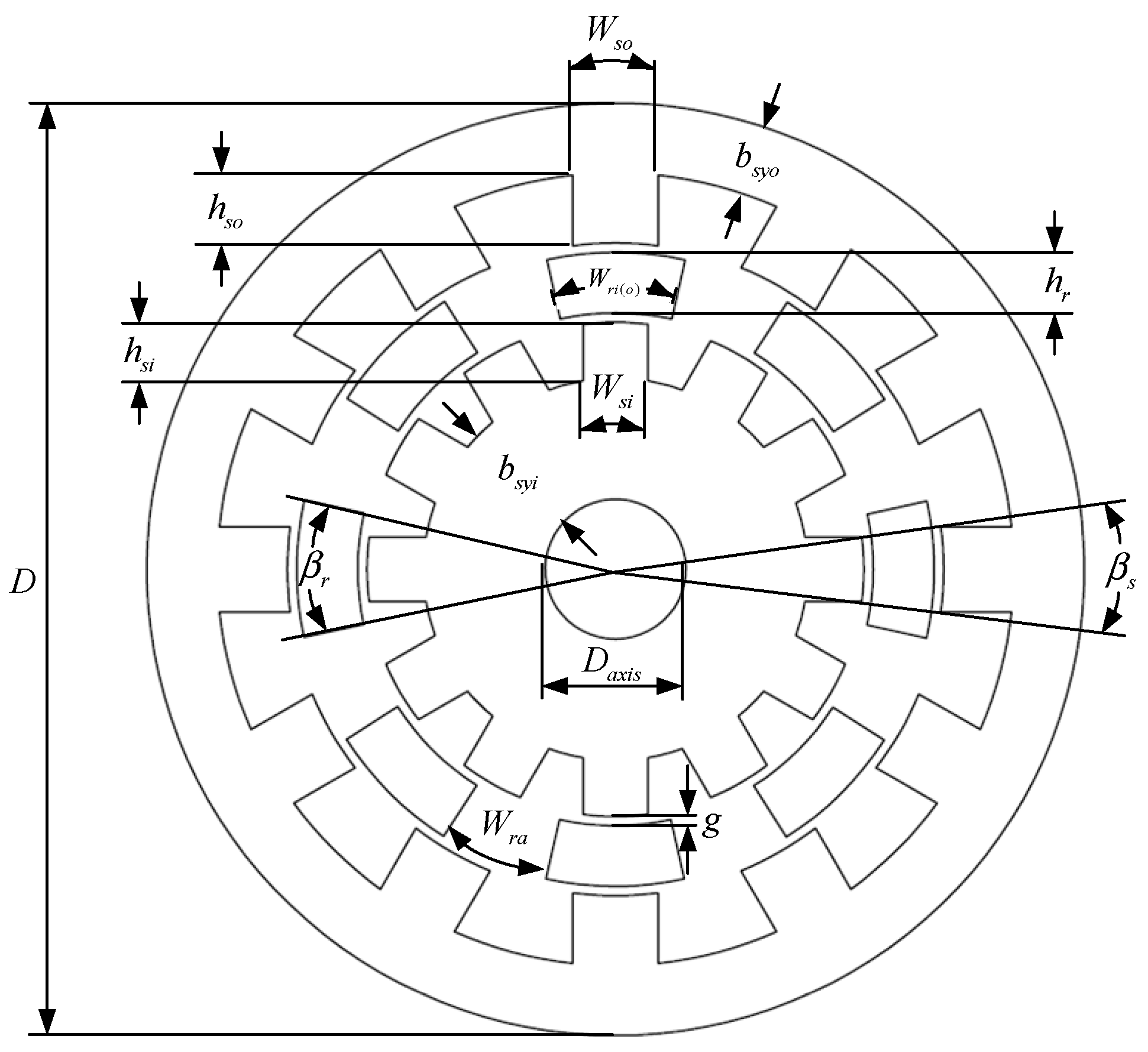
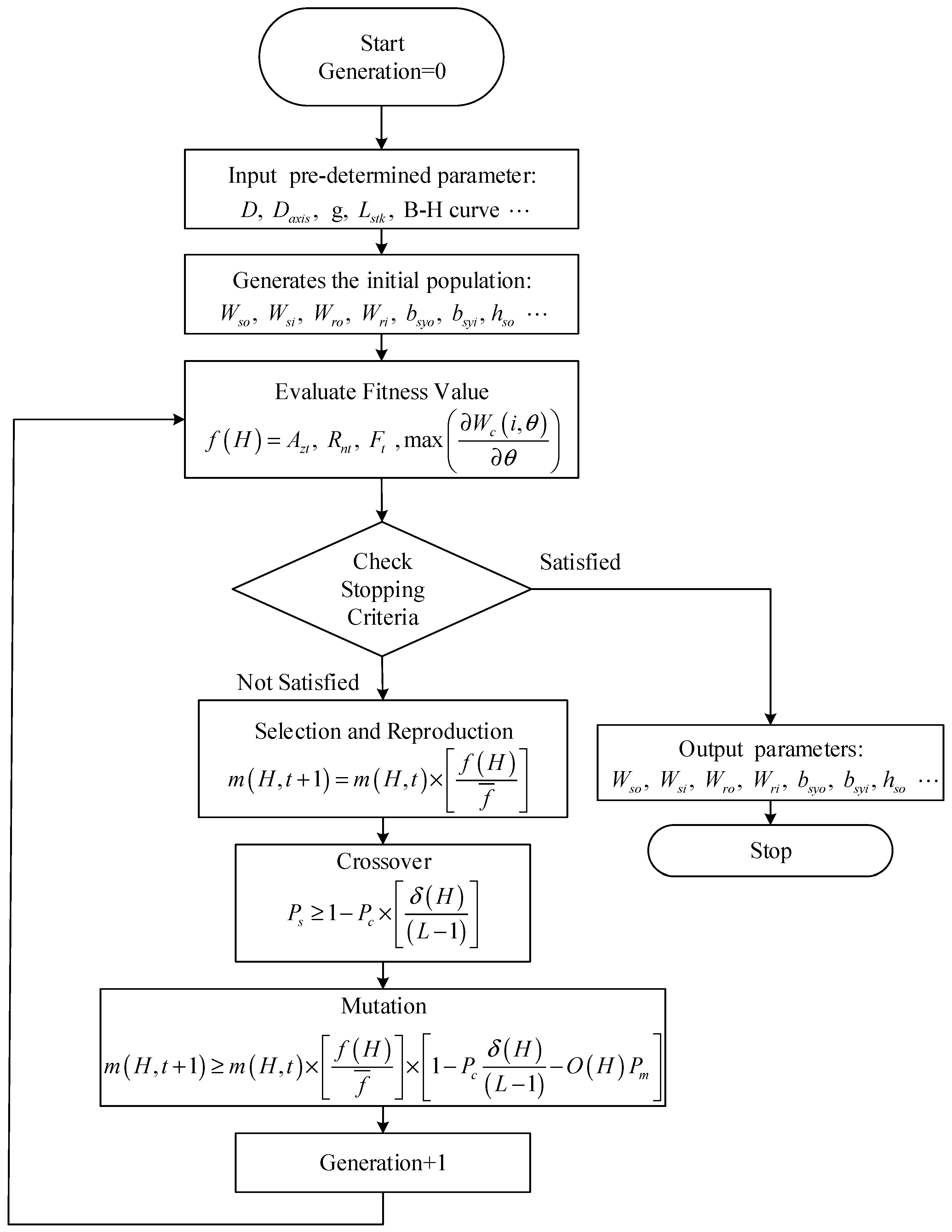

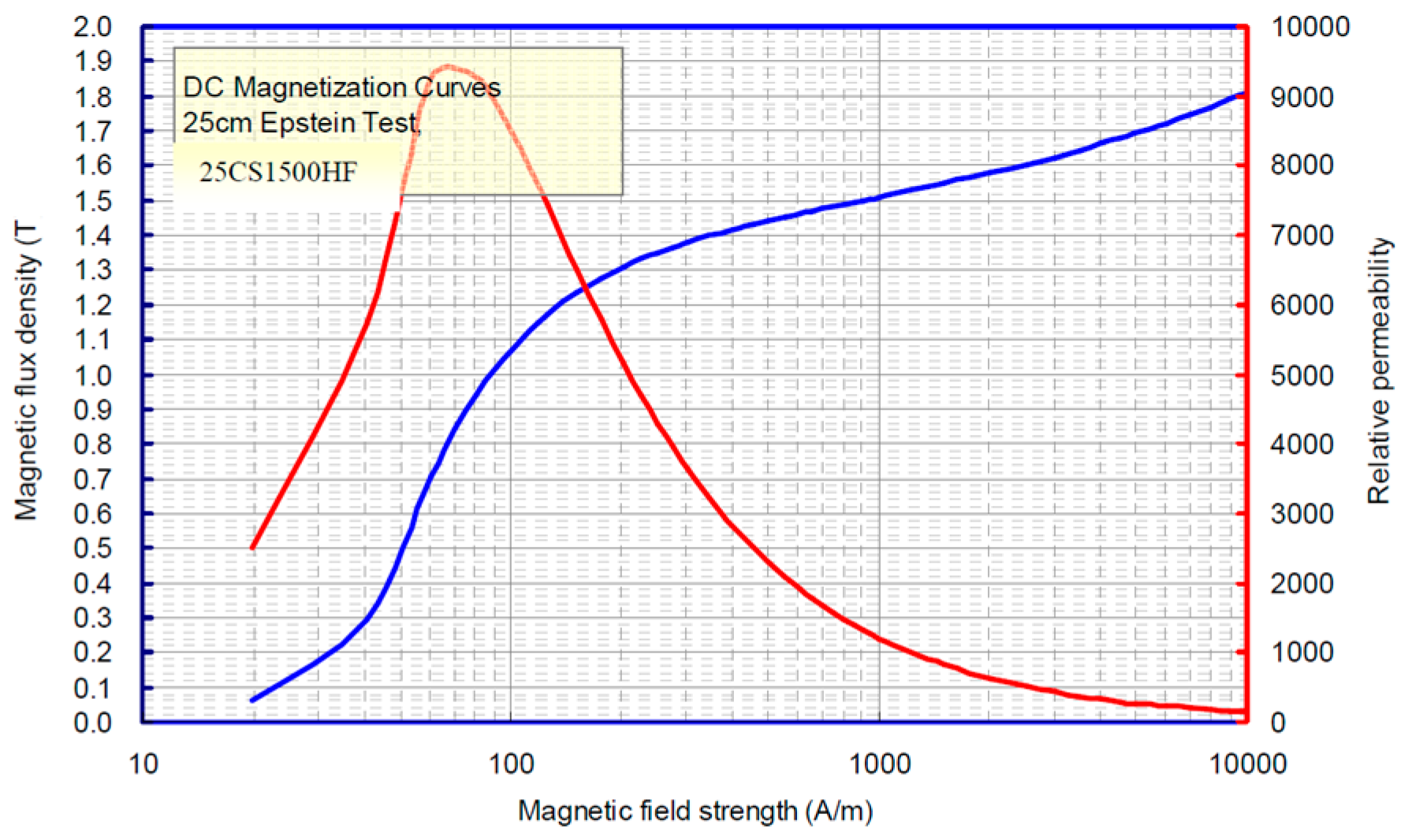
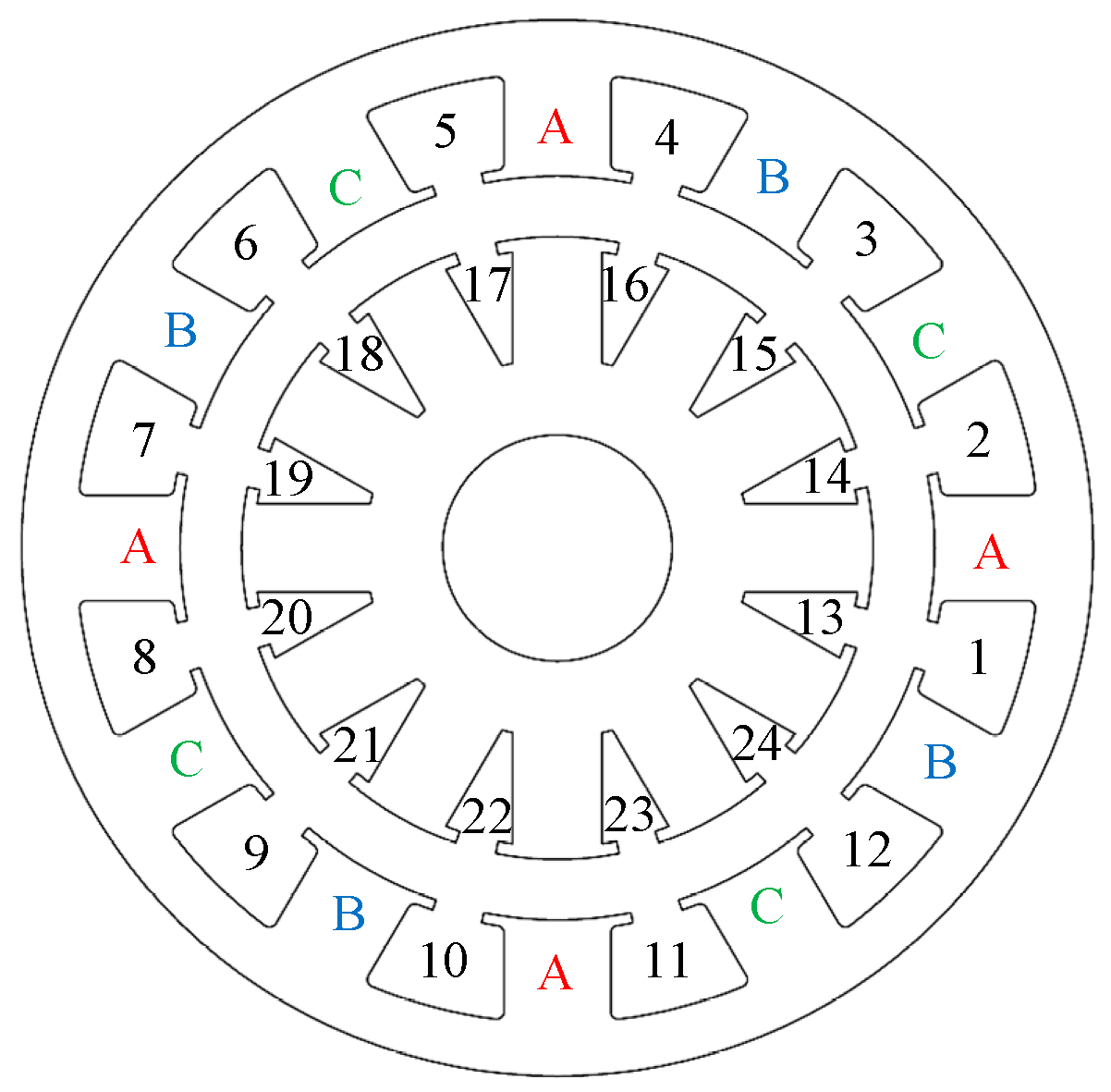
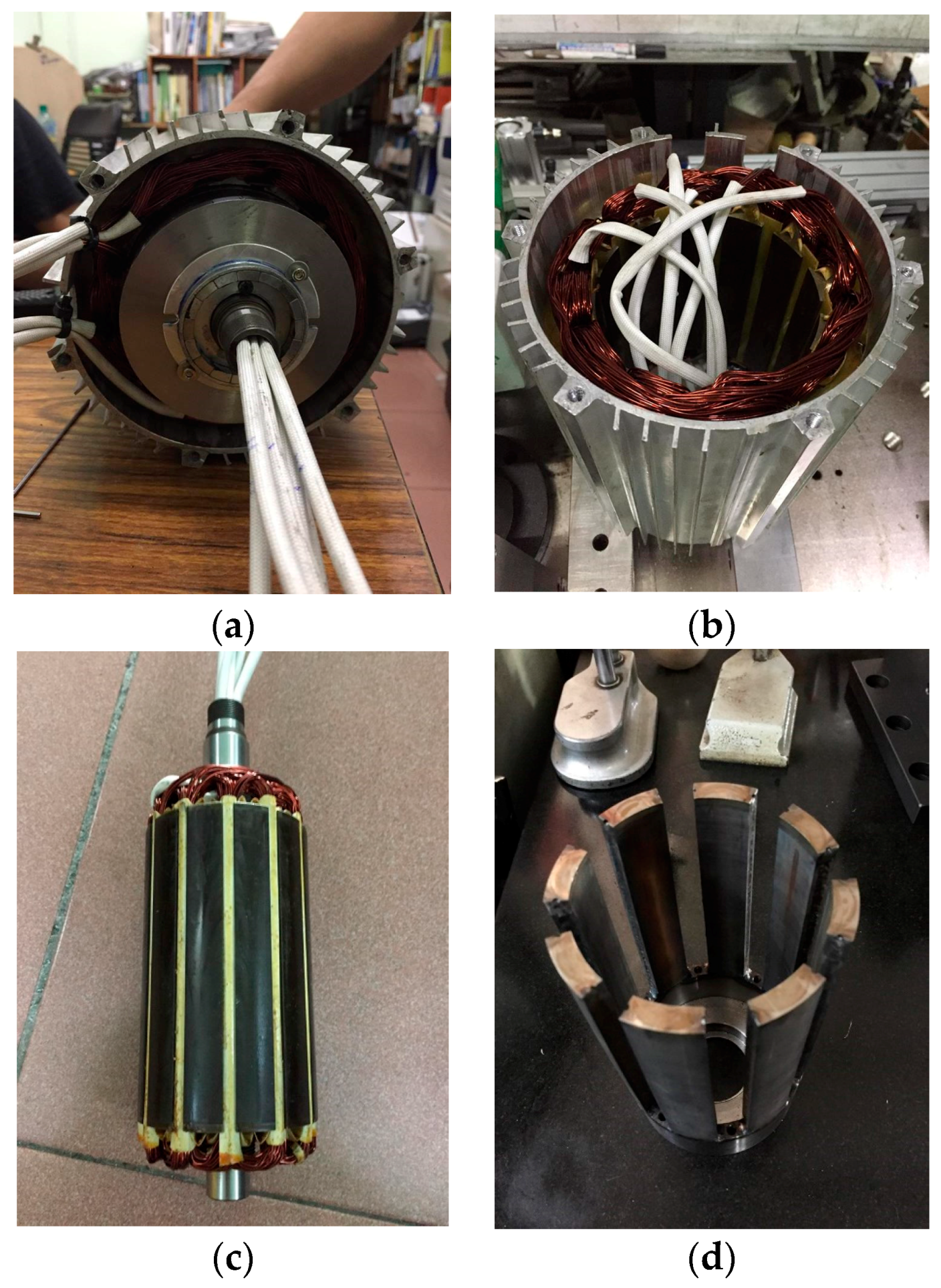

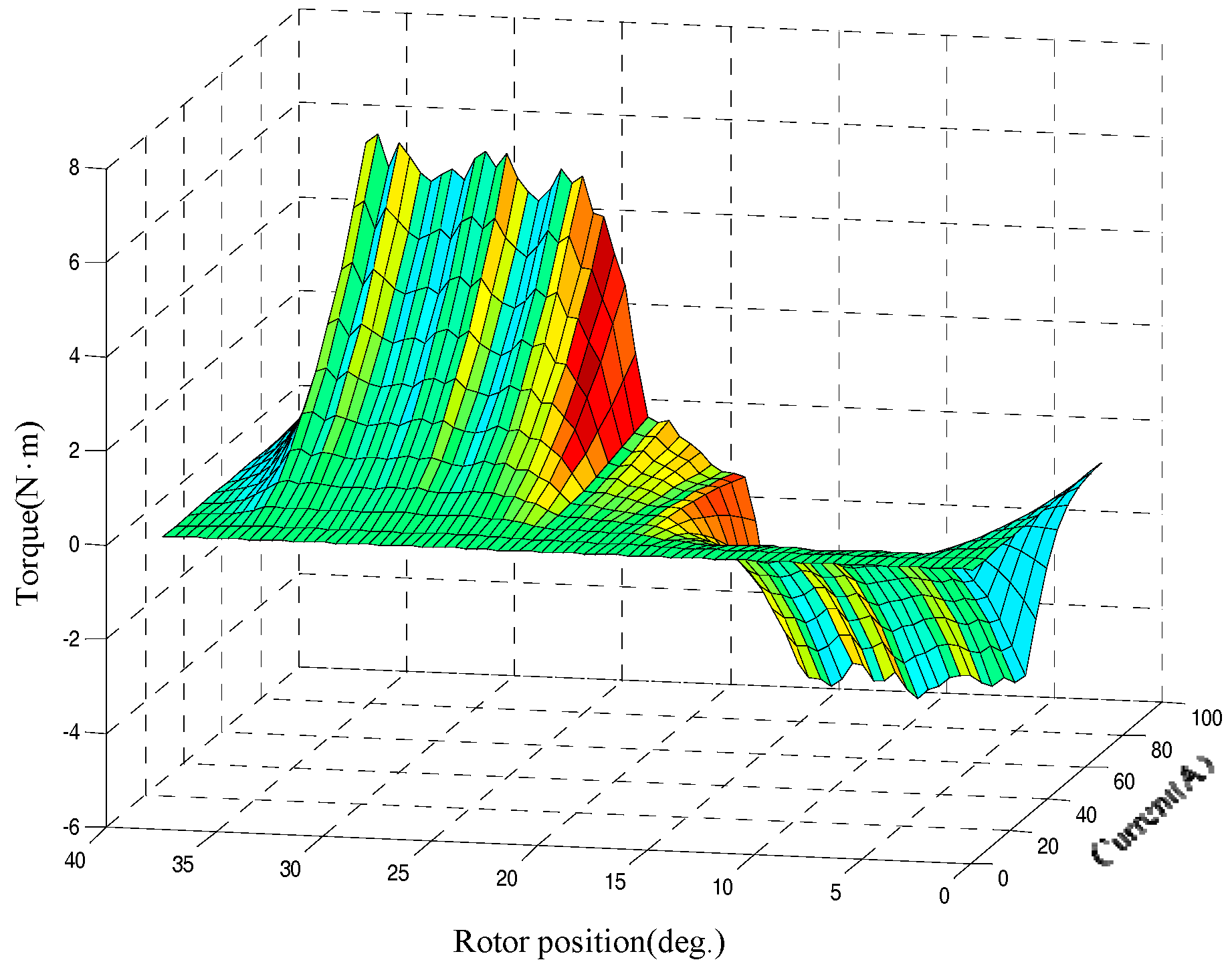
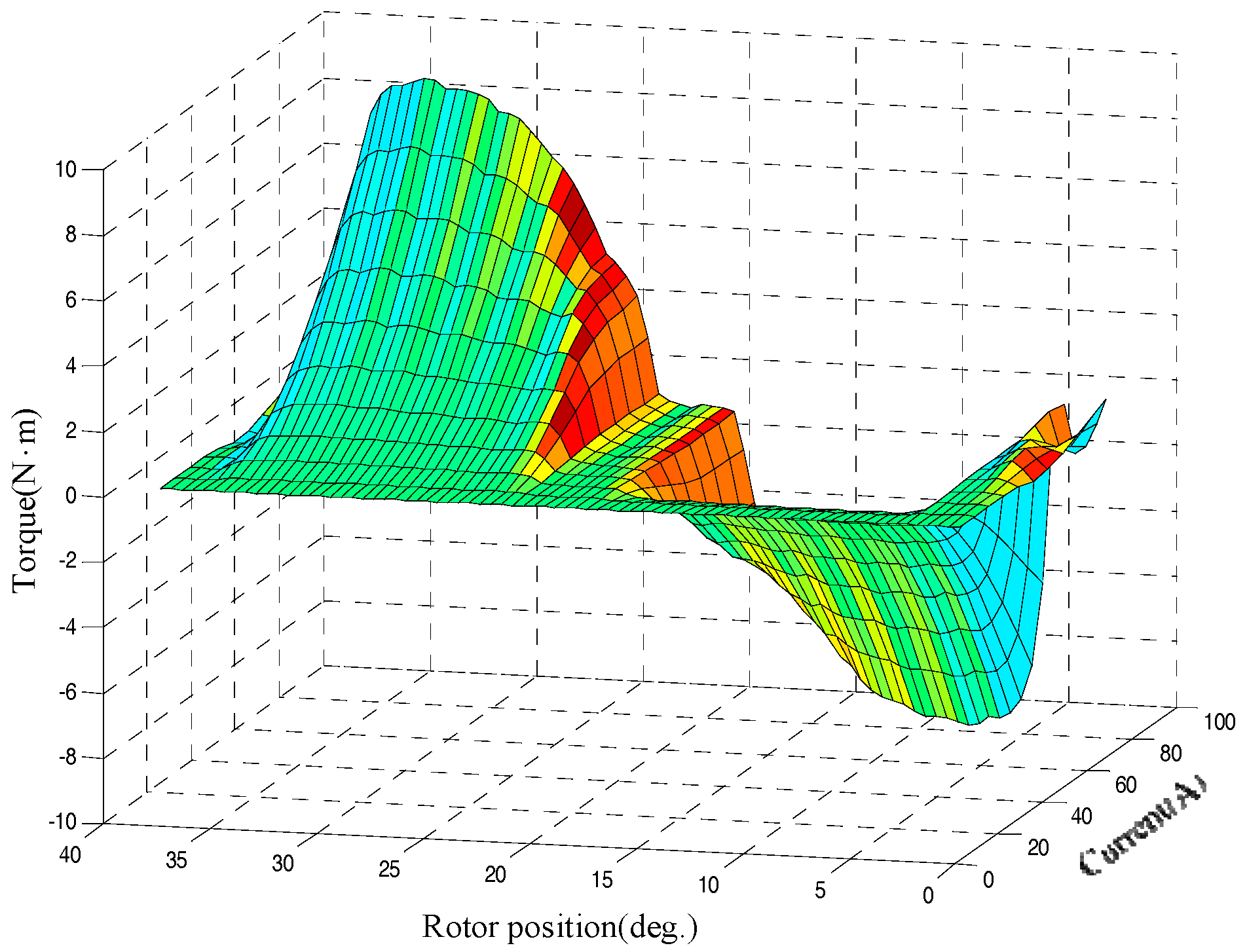
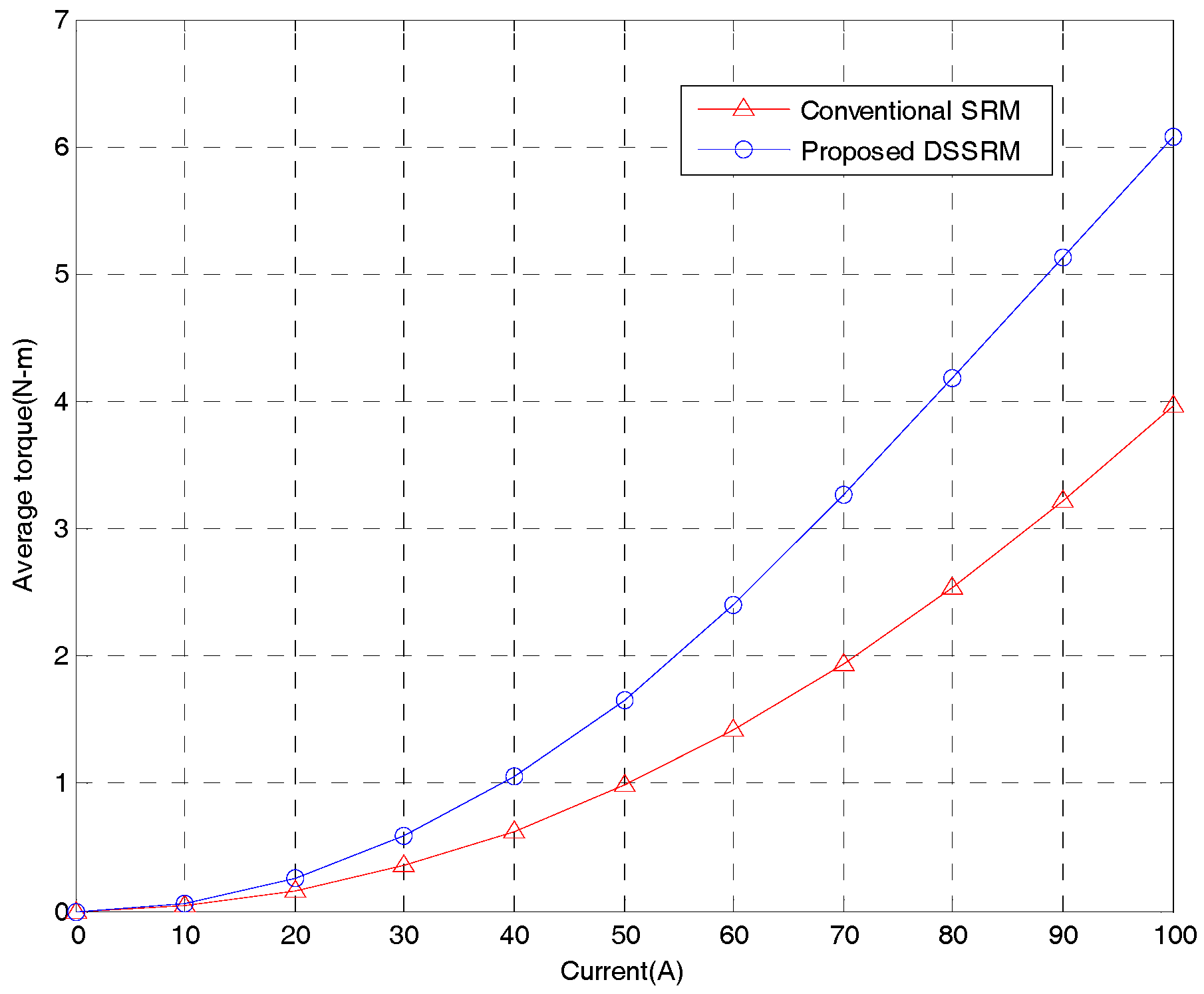
| Symbol | Quantity | |
|---|---|---|
| outer stator tooth width | 14.01 | |
| inner stator tooth width | 11.79 | |
| Rotor tooth outside width | 25.99 | |
| Rotor tooth inner width | 22.06 | |
| Outer stator yoke width | 7.56 | |
| Inner stator yoke width | 9.87 | |
| Outer stator tooth height | 9.91 | |
| Inner stator tooth height | 19.34 | |
| Rotor tooth height | 7.92 | |
| Outer stator diameter | 140 | |
| Shaft diameter | 30 | |
| Air gap length | 0.2 | |
| Thickness of the core | 130 | |
| The total number of turns per slot | 20 |
| Parameters | Conventional | Proposed |
|---|---|---|
| 12/8 SRM | 12/8 DSSRM | |
| Number of phases | 3 | 3 |
| Outer radius of outer stator (mm) | 140 | 140 |
| Length of air gap (mm) | 0.4 | 0.2 2 |
| Outer radius of rotor (mm) | 104.66 | 104.66 |
| Length of stack (mm) | 130 | 130 |
| Rotor inertia () | 4.39 × 10-2 | 1.97 × 10-2 |
| Number of turns/phases (N) | 14 | 20 |
| Wire diameter (mm) | 1.1 5 | 1.1 5 |
© 2017 by the author. Licensee MDPI, Basel, Switzerland. This article is an open access article distributed under the terms and conditions of the Creative Commons Attribution (CC BY) license (http://creativecommons.org/licenses/by/4.0/).
Share and Cite
Yao, W.-S. Rapid Optimization of Double-Stators Switched Reluctance Motor with Equivalent Magnetic Circuit. Energies 2017, 10, 1603. https://doi.org/10.3390/en10101603
Yao W-S. Rapid Optimization of Double-Stators Switched Reluctance Motor with Equivalent Magnetic Circuit. Energies. 2017; 10(10):1603. https://doi.org/10.3390/en10101603
Chicago/Turabian StyleYao, Wu-Sung. 2017. "Rapid Optimization of Double-Stators Switched Reluctance Motor with Equivalent Magnetic Circuit" Energies 10, no. 10: 1603. https://doi.org/10.3390/en10101603






